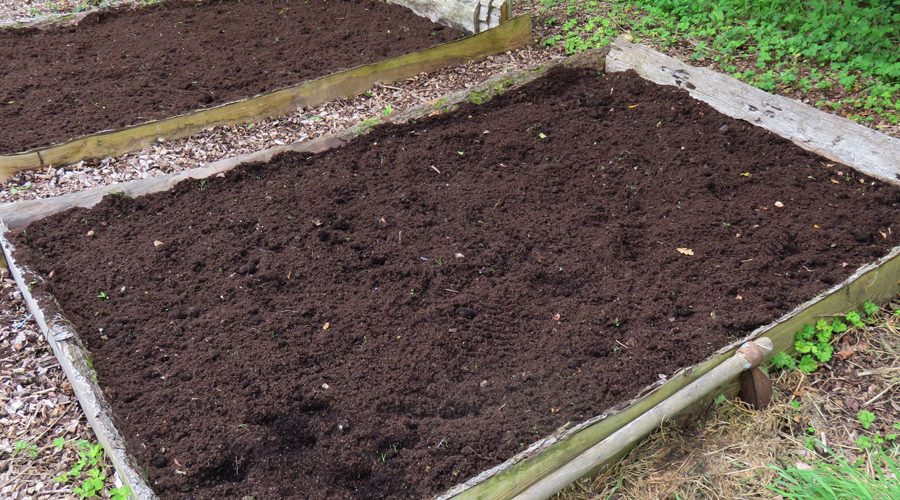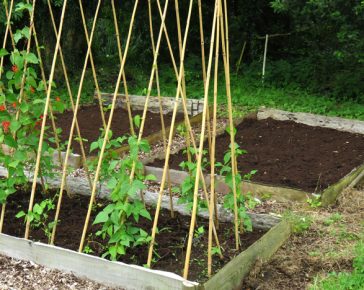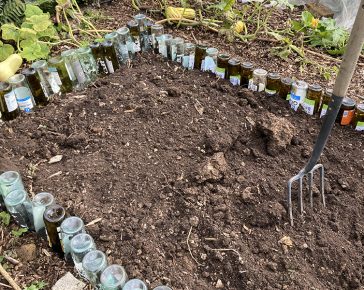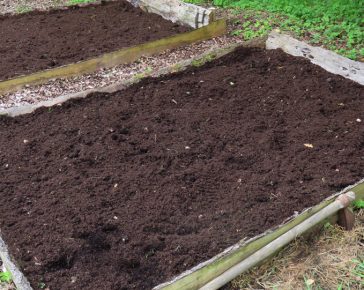Essentially, if you plan to grow in the soil rather than in pots and containers, then you have the choice of building raised beds or digging a bed directly in the ground in which case you will probably dig up the turf and leave grass edges and pathways in between beds.
If you can’t decide whether or not to build raised beds, then the questions and answers below may help.
What’s the quality of your soil?
You might be setting up a vegetable garden on land that is quite stony, or very thick clay-soil – this should be taken into account. If your soil feels unworkable and the spade clangs on large stones every time you put it in the ground to dig, then raised beds will be best. If, however, your soil is fairly good consistency, you may prefer to simply dig a bed and top up with some compost or well-rotted manure.
Is your plot on a slope?
If so, you may find it is easier to create a terraced vegetable garden by using raised beds. The edges of the beds will help to keep soil in place rather than being washed downhill when it rains.
Are you able to tend to your crops at ground level?
There is no real limit to how high a raised bed can be, so if you need to be able to grow your veggies without bending down so far, then you may prefer to either build slightly taller-than-normal raised beds (or consider raised bed style planters that are built on legs.)
What are the advantages of a raised bed?
A raised bed can be helpful in providing good drainage as well as moisture retention. This is particularly useful in plots where the soil is very clay-heavy and may tend toward waterlogging during rainy spells and completely drying out during prolonged dry spells.
One of the major benefits is that you can completely fill a raised bed with compost and top it up each year. The plants can still access a whole load of nutrients from the compost and from the soil below, but the consistency of the compost can be beneficial, and using compost can really help with weed suppression if you keep on top of it with a hoe.
What are the disadvantages of a raised bed?
The two main disadvantages come down to the cost of getting the timber for building frames (that will eventually rot) as well as a lesser-considered disadvantage which is that the timber frame itself provides an easy hiding place for slugs and snails (and sometimes other pests).
Is it hard to build a raised bed?
No – we have a separate article about this, but in essence all you need is four lengths of timber for the sides, four posts to knock into the ground at the corners, and screws to fix the sides to the posts.
Hopefully this gives you a bit of a steer – really there is no right or wrong option, and you can base your decision on what feels right to you for your plot and for your DIY abilities!




